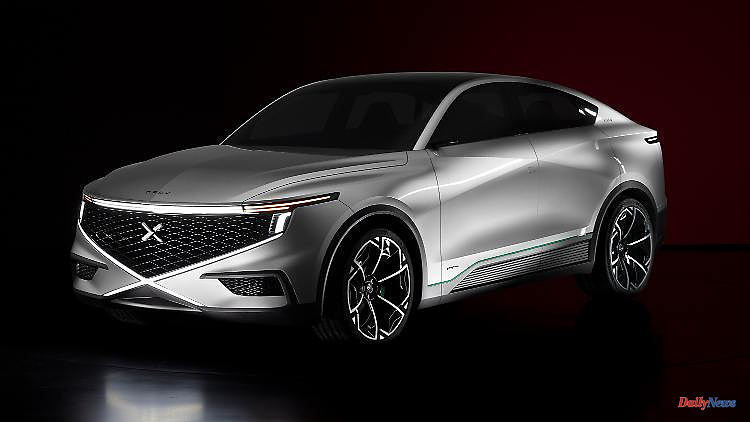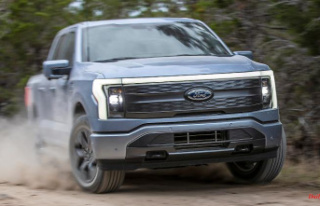An African-French start-up has developed a hydrogen burner which, in addition to a permanently installed tank, has six interchangeable additional capsules with the fuel. The HUV, called NAMX, is said to have a range of 800 kilometers.
A large battery in the basement or a fuel cell in which the electricity required for driving is generated from hydrogen: this is how electromobility generally works today. "Not a good plan," says Faouzi Annajah, one of the founders of the young, still largely unknown Moroccan-French company NAMX. His answer to the global electro hype is in the glaring spotlight in a sparsely furnished hall in the headquarters of the traditional Italian company Pininfarina, which made a name for itself primarily with the design of world-famous car icons and is now part of the team that is changing the car world once again want.
A thick SUV, a good five meters long, whose dome-shaped roof slopes gently towards the rear above the rather narrow side windows. A car in the style of the trendy crossover, as this mixture of coarse SUV and smart coupe was christened. Nothing unusual, cars of this type are offered by many manufacturers. Of course, most of the new releases of the last few months have a large battery under the sheet metal, so they are purely electric. A trend that Annajah and his team want to buck. Under the no-frills but classic hood is a combustion engine that is anything but old school. Its feed is pure hydrogen, naturally produced "green", for example with the power of the sun in the company's home country, in Morocco or other countries bordering the Mediterranean Sea.
"HUV" is what Faouzi Annajah calls his new model, which stands for "Hydrogen Utility Vehicle" and adds a variant to the abbreviation alphabet. However, NAMX does not want to operate a fuel cell with the hydrogen, which then generates electricity and, in this way, turns the car into an electric car. He prefers to take the short route, where the engine burns the hydrogen directly and, above all, pollutes it.
Two versions should come onto the market in the fourth quarter of 2025 at the latest. One with rear-wheel drive and 300 hp, a governed top speed of 200 km/h, a sprint to 100 km/h in 6.5 seconds and a price, depending on equipment, from 65,000 euros. The 550 hp NAMX with two engines and all-wheel drive can do better. 250 km/h, 4.5 seconds to 100 km/h, which should then be available from 95,000 euros.
Both variants have technology on board that should help the NAMX to be suitable for everyday use. Since the network of hydrogen filling stations is very thin everywhere, a kind of range extension is used. If a flap above the rear bumper is opened, six structures are visible that are reminiscent of chrome tailpipes on today's vehicles, but act as a kind of handle. This allows an elongated capsule to be pulled out of the stern. It is a small hydrogen tank with a capacity of eight kilograms.
Since there are six of these capsules, this results in 48 kilograms. The tanks are under high pressure, so the energy in the capsules, together with the main tank, whose capacity is still unknown, is sufficient for the announced range of 800 kilometers. NAMX wants to set up a distribution system where empty capsules can be exchanged for bulging capsules. Partners are being sought for this, for example workshops, gas stations or DIY stores. A capsule can be replaced in around 30 seconds. So the system is similar to that for the gas cylinders that keep the barbecue going.
There are still many open questions that need to be resolved over the next three years. So it is still unclear by whom and where the NAMX is to be produced, so which major car manufacturer is willing to put the African-European idea on the road. However, there are still unknown prospects for this order. Co-founder Annajah admits that many parts of the HUV will come from well-known suppliers and it is not yet clear how the inner workings will be designed. "We're leaning more towards classic dashboards and not towards the virtual world that turns cars into rolling tablets or computer workstations."
On the other hand, the design of the outer skin, which was revealed by NAMX and Pininfarina, is clear. The central theme is the letter X, which is traced by the LED lights on the front and front and which is intended to become a distinctive feature. The side section follows the same logic, with the "X" formed by the body lines intersecting precisely at the dividing line of the doors. The exotic celebrates its public premiere at the Paris Motor Show.
6












